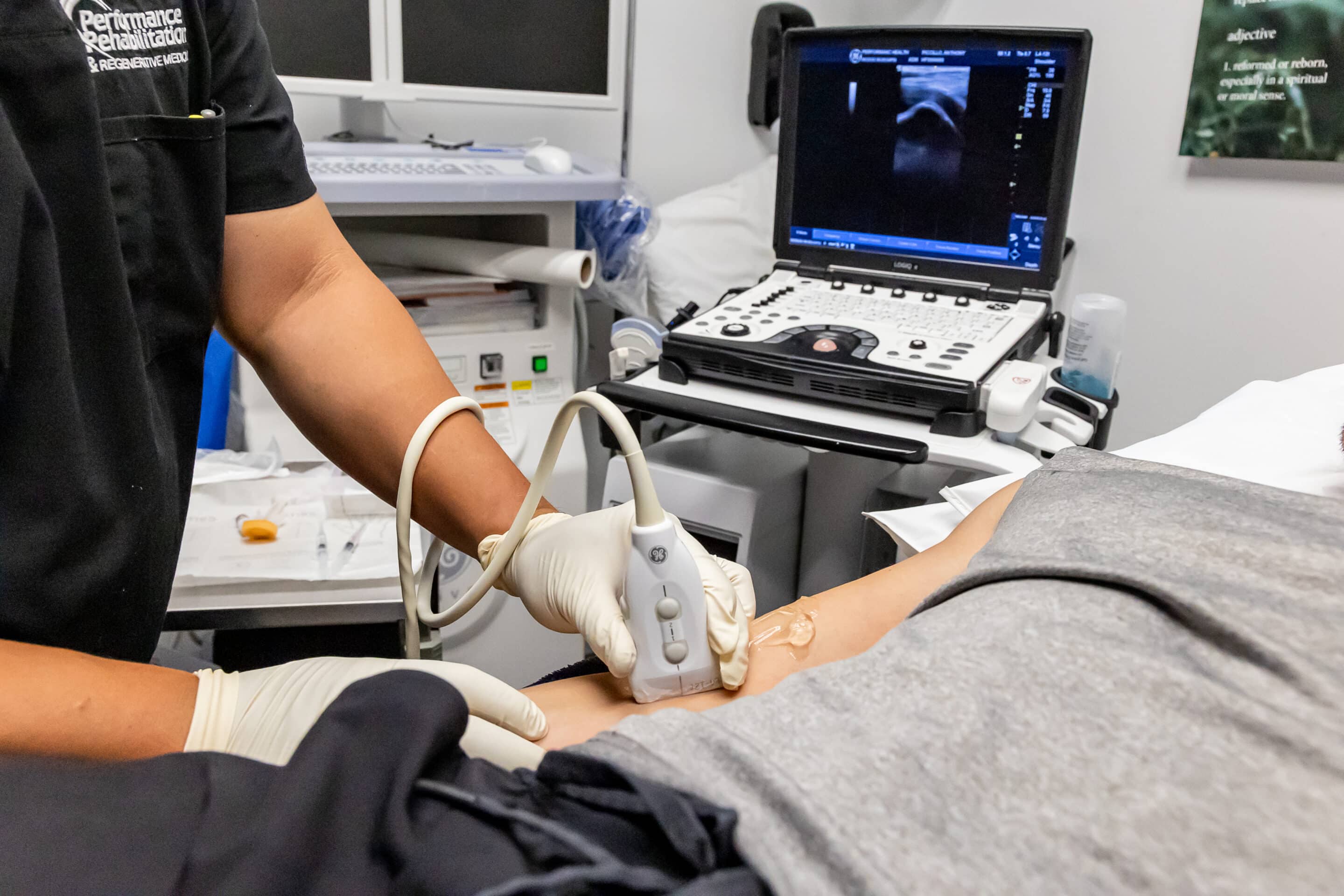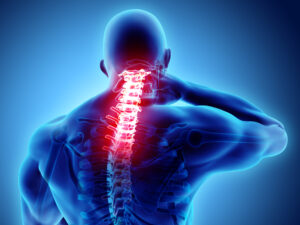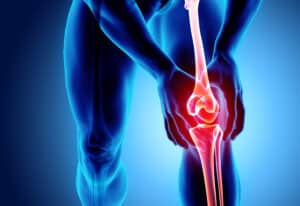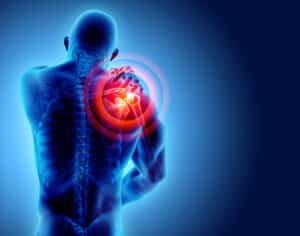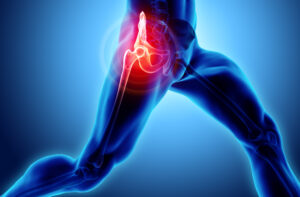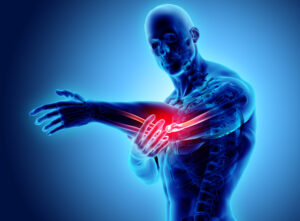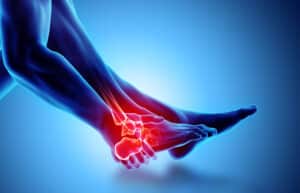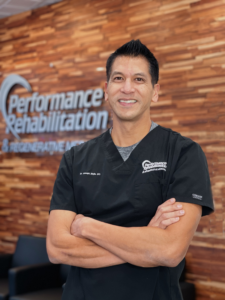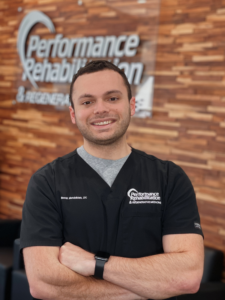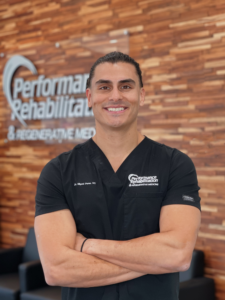Find Relief With The Top Knee Doctors in New Jersey
The knee pain specialists at Performance Rehabilitation & Regenerative Medicine are recognized leaders in the diagnosis and non-surgical treatment of knee injuries and conditions.The knee is a hinge joint with the primary movement of bending (flexion/extension). Since the knee is a weight-bearing joint, it is susceptible to overuse injures including; osteoarthritis, bursitis, patellar (kneecap) tracking dysfunction, and tendonitis (jumper’s knee). In some circumstances, the knee can be damaged in sports injuries, which typically include meniscus tears and ligament injuries.

Common Types of Knee Injuries
- Meniscus Tear
- Knee Bursitis
- Knee Osteoarthritis
- Knee Ligament Injury
- Kneecap Pain (Patellar)
- Patellofemoral Pain (Runners Knee)
The meniscus is a “rubbery” thick piece of cartilage that functions to keep the knee joint stable and absorb forces from walking and running. The knee has a medial meniscus (inside of knee) and lateral meniscus (outside of knee). There are two types of meniscal injuries.
1) A traumatic meniscus tear is a common injury in athletes or active adults and is usually the result of trauma or rapid movements.
2) Degenerative meniscus injuries are non-traumatic in origin and are the results of chronic arthritic processes that occur in the aging population. Patients will often complain of “catching” or “locking” of the knee or the knee will “give out”. Knee swelling and pain will often occur as well.
The knee has three bursa sacs that surround the joint. The bursa is a small gel-filled sac used to cushion and lubricate the soft tissue structures around the knee joint. Bursa are commonly inflamed as the result of tendonitis (jumper’s knee), arthritis or prolonged kneeling on the hard surfaces.
Arthritis is one of the most common causes of knee pain in the aging population. The knee joint is covered in articular cartilage, which is responsible for shock absorption, joint lubrication and reducing friction between bones. Osteoarthritis is a “wear-and-tear” injury to the cartilage that occurs over time. It can be very painful and may result in joint swelling.
The knee is a large complex joint that is supported by four major ligaments. Two collateral ligaments: medial collateral ligament (MCL) on the inside of the knee and lateral collateral ligament (LCL) on the outside of the knee. Two cruciate ligaments located deep inside the knee joint, the anterior cruciate ligament (ACL) and posterior cruciate ligament (PCL). Ligaments are commonly injured with trauma, usually resulting in a sprain. More serious injuries can result in a partial tear or complete rupture of the tendon. Non-traumatic injury can also occur to the ligaments resulting from the arthritic aging process or repetitive strain to the knee. Complete tendon ruptures usually require surgical repair, however less severe injuries often respond well to conservative treatments.
Patellar (kneecap) pain presents with symptoms in the front or anterior aspect of the knee. There are several disorders that can account for this pain:
1) Quadriceps tendonitis: an inflammation of the quadriceps (thigh muscle) tendon that attaches to the patella. Often this is the result of overuse and poor biomechanics.
2) Patellar femoral tracking syndrome: when the kneecap does not move correctly due to musculature imbalance, excessive stress is placed on the patella which will result in pain and swelling. This is often associated with chondramalacia patella.
3) Chondramalacia patella: is a softening of the cartilage underneath the patella that causes knee pain with standing, running and transitioning from sitting to standing.
Runner’s knee (patellofemoral pain syndrome) is pain at the front of knee and around the patellar (kneecap). Patellar pain presents with symptoms in the front or anterior aspect of the knee. There are several disorders that can account for this pain:
1) Quadriceps tendonitis: an inflammation of the quadriceps (thigh muscle) tendon that attaches to the patella. Often this is the result of overuse and poor biomechanics.
2) Patellar femoral tracking syndrome: when the kneecap does not move correctly due to musculature imbalance, excessive stress is placed on the patella which will result in pain and swelling. This is often associated with chondromalacia patella.
3) Chondromalacia patella: is a softening of the cartilage underneath the patella that causes knee pain with standing, running and transitioning from sitting to standing.
Dr. Joseph Bellapianta, MD
Orthopedic Surgeon
Dr. Anthony Piccillo, DC
Primary Spine Physician
Dr. Brendt Mendelblatt, DC
Chiropractic Physician
Dr. Joseph Mejia, DO
Pain Management Physician
Dr. Miguel Perez, DC
Chiropractic Physician
Dr. Kevin Tabije, DO
Pain Management Physician
Dr. Thomas Chiappetta, DC
Chiropractic Physician
Dr. Chris Thomas, MD
Pain Management Physician
